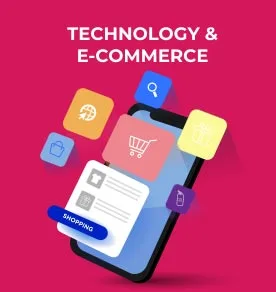How Traditional Indian Brands are Embracing Technology and Evolving Consumer Behavior

The insights reveal a profound narrative of continuity, where traditions endure even as the channels and tools around them transform radically.
By Vaishnavi Gupta, Associate Editor
May 19, 2025 / 15 MIN READ
In an era where consumer preferences shift with the swipe of a screen, India’s heritage-driven brands find themselves at the crossroads of legacy and innovation. At IReC X D2C 2025, leaders from some of India’s most iconic traditional brands—N. Ranga Rao & Sons (Cycle Pure Agarbathies), Mysore Saree Udyog, Nalli Group, Anand Sweets, and industry consultants from Helicon Consulting—came together to discuss how deeply rooted cultural businesses are evolving with changing buying behaviors, digitization, and consumer discovery patterns.
Their insights reveal a profound narrative of continuity, where traditions endure even as the channels and tools around them transform radically.
Anchoring to Rituals in a Modern World
For Arjun Ranga, CEO of N. Ranga Rao & Sons, the maker of Cycle Pure Agarbathies, the core purpose of the product—facilitating prayer and spiritual rituals—has not changed. “People use our product to pray to God. And I think God has kind of remained constant for the last, I think, 10,000 years,” Ranga quips, highlighting the timeless relevance of incense sticks in Indian households.
While the usage pattern has stayed largely consistent, the consumer journey has dramatically transformed. “Earlier, the influencer was the Pujari. Today, it's someone on Instagram recommending your product,” says Ranga, drawing attention to how the influencer ecosystem has taken over from traditional gatekeepers of trust.
The transaction, in essence, is spiritual—a deeply personal moment between the consumer and their deity. “We just need to be present at that moment,” Ranga explains, underscoring that while distribution channels have exploded—from kirana stores to quick commerce—the brand must be discoverable where the consumer is searching, not just where they are buying.
The Legacy of Nalli: A Century of Craftsmanship and Customer Trust
Founded over a century ago, Nalli has long been synonymous with exquisite sarees and impeccable customer service. The brand has traditionally thrived in brick-and-mortar stores, deeply embedded in the Indian cultural fabric. However, the challenges of modern retail and evolving customer expectations compelled the brand to explore new avenues.
Lavanya Nalli’s journey is particularly instructive. After spending seven years outside the family business—earning an MBA from Harvard, working at McKinsey, and serving as a VP at Myntra—she returned to Nalli in 2016 to spearhead its e-commerce initiative.
“When I say we started e-commerce, I mean literally from scratch. My first hire was one developer,” Lavanya recalls. “Back then, the mindset among many incumbents, especially traditional retailers, was that e-commerce was not a legitimate channel—it was a discount-driven playground. Who would buy high-value sarees online with zero discounts?”
This skepticism about selling premium products online was a common sentiment among heritage brands. The challenge was not only technological but also cultural: convincing discerning customers to trust online channels for luxury ethnic wear.
Sarees, Sustainability & Storytelling
Similarly rooted in culture is Mysore Saree Udyog, a brand that’s been dressing generations in handcrafted fabrics. “It’s just an extension of what Arjun was saying,” begins Founder Dinesh Talera. “You need ethnic wear when you’re praying, for festivals, or during big fat Indian weddings. So it’s always relevant.”
The company has smartly ensured that traditional weaves and techniques remain relevant across generations. From sarees to indo-western attire, Talera points out that “the same technique can be used for a wide variety of silhouettes.” This design versatility helps the brand connect with Gen Z and millennials while staying true to its heritage.
He offers a compelling take on sustainability: “If you ask me, what can be more sustainable than a saree? A girl buys it at 16 for her graduation, again for her wedding, and when she becomes a grandmother, she passes it on.” It’s not just a garment—it’s a cultural heirloom, and that emotional continuity makes it more than fashion. It’s a movement with cult-like loyalty.
From a business operations standpoint, Mysore Saree Udyog has long invested in enterprise technology, even as early as the 1980s. Talera emphasizes the long-term vision behind embedding technology across all verticals—from vendor visibility and supply chains to human resource management and customer engagement.
This blend of technology with tradition has ensured that while the product remains steeped in history, the way it is sold, marketed, and fulfilled is thoroughly modern.
From Local to Population Scale: Rethinking Retail Models
For Vikram Kumar Limsay, Founder of Helicon Consulting, the discussion zooms out to a macro perspective. According to him, India is at a “nascent stage” of digital maturity when it comes to traditional businesses truly adopting omnichannel thinking.
“We’re great at influencer-driven awareness,” says Limsay, “but the tech stack needed for acquisition, retention, and especially conversion, is still developing.” The biggest challenge, he says, lies in superimposing new-age tech on old-school business models. “You can’t slap on a Shopify and expect magic,” he warns. The business model itself must evolve.
The opportunity, however, is immense. Thanks to India’s Digital Public Infrastructure (DPI)—which includes platforms like UPI, ONDC, Aadhaar, and more—legacy brands can scale rapidly if they modernize. “The risk is existential,” he says. “New brands that are digitally native will edge out older ones that fail to transform.”
To survive and thrive, legacy businesses must redefine what they sell. “Arjun Ranga doesn’t just sell incense sticks. He sells hope,” Limsay points out. “McDonald's doesn’t sell burgers, they sell convenience.” Understanding the core emotion or utility behind the product is crucial to making it scalable.
Regional to Pan-India: A Sweet Transformation
Anand Sweets, a brand synonymous with high-quality Indian mithai in Bengaluru, is another example of a regional player scaling up by staying relevant. “Back in the ’80s and ’90s, digital wasn’t even a conversation,” recalls Managing Director Arvind Dadu. “But when IT brought people from all over India to Bangalore, we had to diversify our product to cater to pan-India tastes.”
This cultural diversification became a turning point for the brand. “We started offering sweets from Maharashtra, North India, Bengal, and more—all under one roof,” Dadu adds.
The company was also an early adopter of e-commerce, launching a website as far back as 2005—an unusual move for a traditional food business at the time. “It gave us a pan-India audience much before logistics and food delivery became mainstream,” says Dadu.
Today, Anand Sweets continues to invest in tech—from digital ordering to last-mile logistics, offering everything from gourmet hampers to corporate gifting online. The brand has also responded to new gifting cultures and premiumization trends, offering a curated experience for the modern consumer without diluting its authenticity.
The Discovery Dilemma: Visibility vs. Sales
One of the strongest themes that emerged across panelists was the evolution of product discovery. As Arjun Ranga aptly puts it, “I made a big mistake initially by focusing on where my sales came from instead of where the customer discovered my product.”
With Instagram reels, YouTube creators, and marketplaces like Amazon or Blinkit driving awareness, the consumer’s first touchpoint with a brand has moved online, even if the final purchase may still happen in a physical store.
This shift demands a completely new way of thinking about marketing and communication. It's no longer enough to focus on sales; brands must engineer discoverability through content, influencers, SEO, and digital storytelling.
The Omni-Truth: Retail Without Borders
Whether it’s a saree, sweet box, or incense stick, the moment of truth now happens across multiple channels. A customer may see an Instagram ad, read a Google review, visit a store, and eventually place the order via quick commerce.
Legacy brands must therefore harmonize their presence across digital and physical touchpoints, ensuring consistency in brand voice, product availability, pricing, and service. This omnichannel transformation requires not just technology but a mindset change at every level—from top leadership to frontline staff.
It also means rethinking KPIs—from footfalls and revenue per square foot to engagement rates, conversion metrics, and net promoter scores.
The Road Ahead: Blending Legacy with Agility
What emerges from this discussion is a clear roadmap for legacy brands in India:
- Honor the core, but don’t resist change.
- Invest in discovery platforms, not just retail shelves.
- Use technology as an enabler, not a cosmetic addition.
- Rethink your business model to align with modern expectations.
- Create digital-first experiences even for the most traditional products.
Perhaps most importantly, brands must redefine what they truly sell. As Vikram Limsay aptly summarizes, “It’s not incense sticks. It’s hope. It’s not sarees. It’s heritage. It’s not sweets. It’s celebration.”
In an era where consumer preferences shift with the swipe of a screen, India’s heritage-driven brands find themselves at the crossroads of legacy and innovation. At IReC X D2C 2025, leaders from some of India’s most iconic traditional brands—N. Ranga Rao & Sons (Cycle Pure Agarbathies), Mysore Saree Udyog, Nalli Group, Anand Sweets, and industry consultants from Helicon Consulting—came together to discuss how deeply rooted cultural businesses are evolving with changing buying behaviors, digitization, and consumer discovery patterns.
Their insights reveal a profound narrative of continuity, where traditions endure even as the channels and tools around them transform radically.
Related Stories
Once considered a quiet corner of the apparel industry, India’s innerwear market has emerged as one of its most vibrant growth engines. What was traditionally a necessity-driven category has now…
- By Vaishnavi Gupta
- |
- 8 Min Read
In a landmark move that could reshape India’s Rs 16 lakh crore dairy industry, the 56th GST Council has approved a rationalization of GST rates on milk and milk products — a decision that has already…
- By Vaishnavi Gupta
- |
- 7 Min Read
Snacking in India is getting a healthy makeover. As more people choose mindful eating and nutritious options, homegrown brands are changing the way we think about snacks. From nuts and trail mixes to…
- By Richa Fulara
- |
- 10 Min Read




